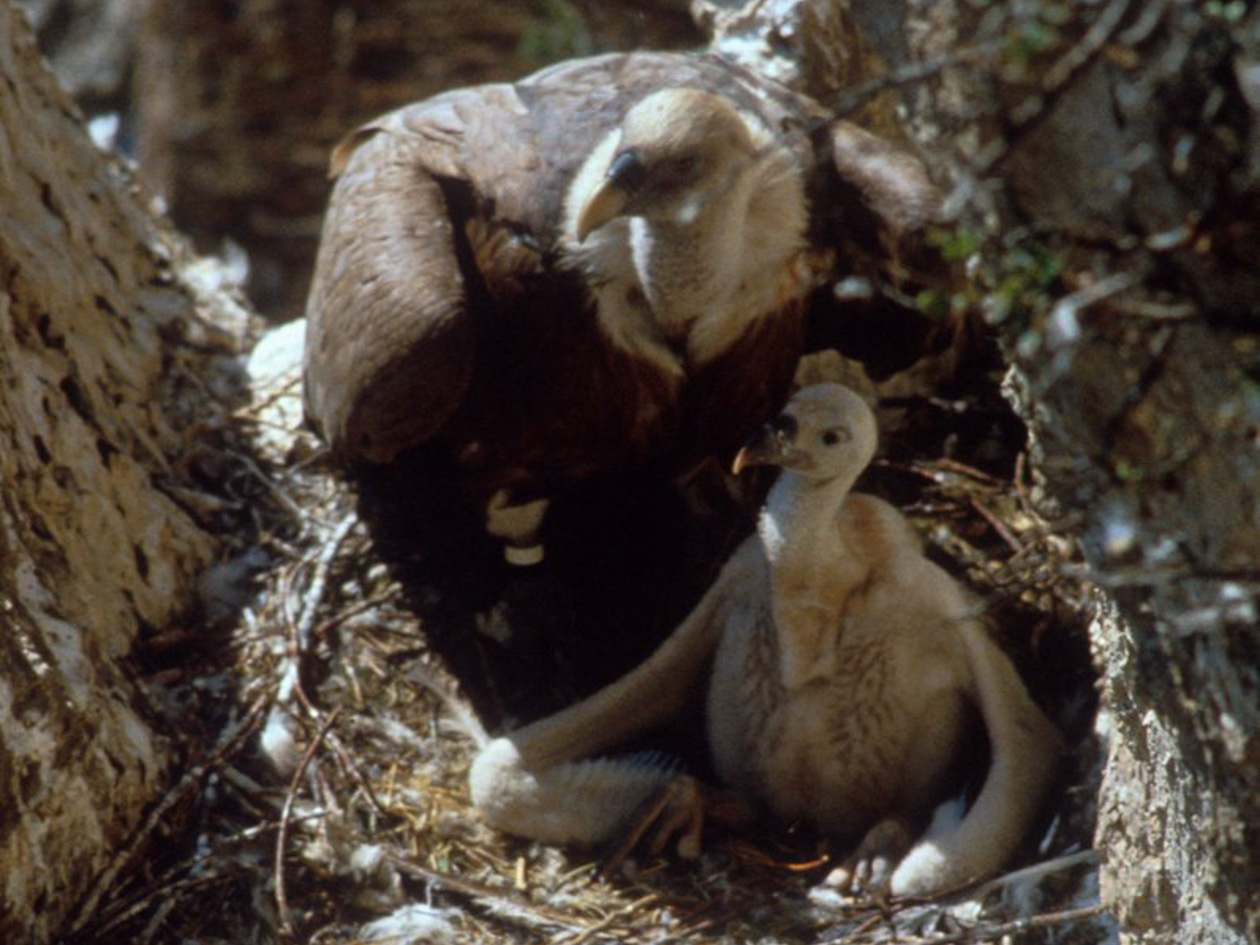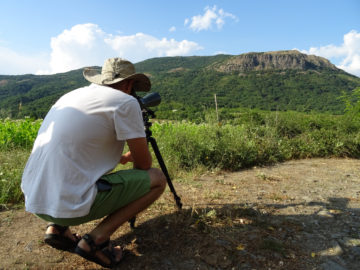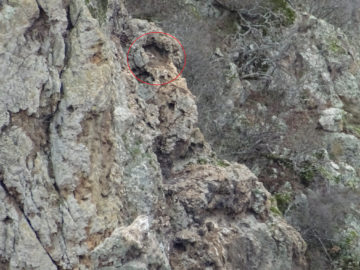So far 72 griffon vulture chicks have hatched in the Rhodope Mountains rewilding area this year – seven more than in 2018. A milestone success for the local rewilding team, this record-breaking result represents another positive step forward in the Balkan-based comeback of these magnificent birds.

Peak progress
Rewilding Europe is thrilled to announce that a record-breaking 72 griffon vulture chicks have hatched in the Rhodope Mountains rewilding area in southeastern Bulgaria this year. This represents an increase of seven over 2018, maintaining the encouraging population growth witnessed in recent years.
The breeding success of the vultures was confirmed by the Rewilding Rhodopes team, which carried out a recent census in the valley of the Arda River. The positive news pays testament to the hard work and dedication of the team, and the ongoing activities carried out under the framework of the LIFE Vultures project.
“We are really delighted,” says Dobromir Dobrev, a vulture expert attached to the Rewilding Rhodopes team. “There are three more vulture pairs currently at incubation stage, so the total number of hatched youngsters may eventually be as high as 75.”
Critical period

Vulture chicks hatch at the end of March and early April. They are then raised by their parents for nearly four months until they are ready to fly, taking to the air for the first time around 140 days after birth. By the middle of summer the young vultures typically weigh about seven to eight kilogrammes; while they are not quite as heavy as their parents, they are the same size, and have all their feathers (although the colouring in juvenile vultures is different to adult birds).
Griffon vultures are known to be caring parents, with both partners changing position while hatching the egg and raising their chick. During hot summer days each parent can spend hours with extended wings, shading their offspring.
“The next few months are critical to the development of the newly hatched chicks,” explains Dobrev. “Their parents need to ensure they have enough to eat as they prepare to leave the nest.”
The Rewilding Rhodopes team will continue to monitor the nests until all the young vultures take flight.
Continued comeback

The griffon vulture was once widely distributed across Bulgaria. But by the early 1970s it was thought to have disappeared completely, largely due to a lack of carrion, habitat loss, persecution and poisoning. In 1986 a griffon vulture colony was discovered near the small town of Madzharovo in the Eastern Rhodope Mountains, consisting of about 20 birds and three nesting pairs. Ongoing conservation efforts have seen Bulgaria’s griffon vultures recover from this low point.
Earlier this year the Rhodope Mountains rewilding team counted 95 pairs of griffon vultures in the rewilding area, representing one more pair than in 2018, and nine more than in 2017. Recently the team discovered another pair, taking the total number of occupied nests to 96 in the Bulgarian part of the Eastern Rhodopes.
With the number of griffon vultures in the Bulgarian and Greek sections of the Rhodope Mountains now totalling over 100 pairs, this locally endangered species continues to reestablish itself in the Balkan region. Despite recent growth, the population still remains fragile and must be supported by ongoing conservation efforts.
Starting in 2016, the five-year LIFE Vultures project was developed by Rewilding Europe, in collaboration with the Rewilding Rhodopes Foundation, the Bulgarian Society for the Protection of Birds (BSPB), and a range of other partners.
Focusing on the Rhodope Mountains rewilding area in Bulgaria, as well as a section of the Rhodope Mountains in northern Greece, the aim of the project is to support the recovery and further expansion of the black and griffon vulture populations in this part of the Balkans, mainly by improving natural prey availability, and by reducing mortality through factors such as poaching, poisoning and collisons with power lines.
Want to know more?
- Visit the Rewilding Rhodopes Foundation website
- Read more about the LIFE Vultures project
- Learn more about the Rhodope Mountains rewilding area
- Visit the Rewilding Rhodopes Facebook page
